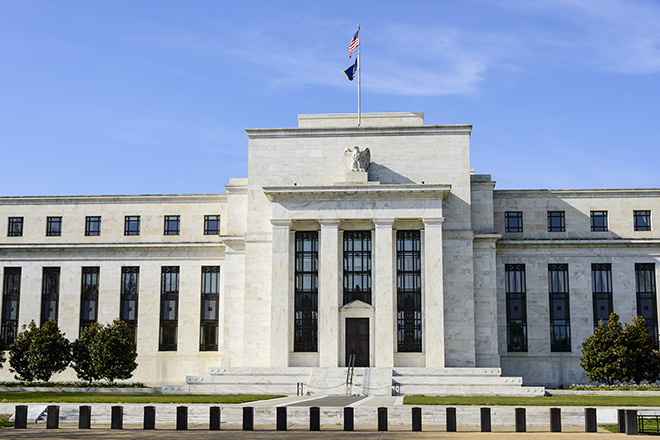Subscribe
Sign up for timely perspectives delivered to your inbox.

With the US Federal Reserve preparing to take the initial steps in reducing extraordinary policy support for the bond market, investors should consider expanding their opportunity set in an attempt to capture attractive risk-adjusted returns, Portfolio Manager Jason England argues.
The US central bank has learned that disciplined and transparent messaging is essential if it wants to avoid “own goals” like 2013’s “taper tantrum” or even them being caught flat-footed early this year as the yield on the 10-year US note rose to 1.74%. And affirmation of what was already priced into the market is exactly what we got on Wednesday.
Chairman Jerome Powell and company have evidently seen enough improvement in the US labour market – and perhaps lost more than a few hours of sleep pondering exactly how transient the current elevated level of inflation is – to reach the conclusion that the time is nearing to commence tapering the US Federal Reserve’s (Fed’s) US$8.4 trillion balance sheet.
To keep score, over the course of 2021, we’ve gone from “talking about talking about” tapering to actually “talking” about it, and now signaling a start date – likely by the end of this year. With the timing of the taper mostly settled, investors are now left to conjecture about the pace. While we initially expected the reduction of monthly asset purchases to be roughly $15 billion, if the Fed considers it appropriate to end the taper by the middle of 2022, we would then believe that a larger monthly reduction would be merited, perhaps as high as $20 billion. At that point, we suspect the Fed will pause to gauge the economic conditions, especially given the uncertainty of the global health crisis.
To be sure, the Fed’s balance sheet would still be expanding to the tune of US$100 billion to US$105 billion into next year. It would be difficult to imagine any other period where such a move could be described as “hawkish,” but this is a first step and validation of Chairman Powell’s declarations that the Fed would follow the data and allow developments pertaining to its dual mandate be the deciding factors in future monetary policy.
Just as a modest reduction in asset purchases is a gesture toward less accommodation (calling it a move toward normalisation almost seems absurd), so is half the Federal Open Market Committee’s (FOMC’s) voting members now expecting a single rate hike by the end of next year. Perhaps more relevant is the expectation that the fed funds target rate may climb back to 1.0% by the end of 2023. While this is an increase over June’s “dot plot” survey, it is less hawkish than we anticipated. That at least saved Chairman Powell the trouble of again downplaying the significance of the “dots.”
Still, the die is cast: rates, in our view, have nowhere to go but higher. As evidenced by the Fed’s desire to stay in front of economic developments, we believe the rise will be a slow grind with considerable efforts made to avoid spikes in US Treasury yields like what markets experienced earlier this year. Even with the shift forward in projected rate hikes, we believe that the Fed would take steps (rhetorical or otherwise) to manage the rise in Treasury yields, with that of the 10-year likely finishing 2021 in the neighborhood of 1.50%.
Investors welcome a transparent Fed. That, however, does not translate to an easy path forward for bond investors. In fact, even this slight move away from hyper-accommodation is a signal that low yields (and high bond prices) won’t last forever. The steady grind toward higher rates has the real consequence of eating into capital. And with rates at these historically low levels, it only takes a small capital loss to overwhelm any income generated by a bond.
Exacerbating the situation are high valuations on corporate credits – typically a preferred destination for bond investors in periods of low rates. The spread between yields on corporate bonds and those of their risk-free benchmarks is presently 35% below their 10-year average.1 Any economic setback – from a virus resurgence, geopolitical event or the economic cycle growing long in the tooth – could lead to a widening of credit spreads and headaches for investors.
Despite the headwinds created by the Fed diminishing its role in the bond market, we believe a fixed income allocation continues to provide important benefits to investors. Given current conditions, however, these allocations must work harder to generate income and preserve capital. While all eyes are on the US, other regions with rates in the range of US Treasuries are further away from tightening policy. A global bond allocation incorporating bonds from countries like Australia and New Zealand can provide a level of capital protection and income similar to US Treasuries with potentially lower risk of an imminent rise in rates.
Within credit, numerous price dislocations have resulted in opportunities to capture attractive yields. For much of the crisis, we’ve been cautious toward a basket of stocks we refer to as the BEACH (bookings, energy, airlines, cruises, hospitality). With the economic reopening continuing and vaccination rates climbing, the prospects of many issuers in this category have improved, and to a degree possibly not yet reflected in their bond prices. Elsewhere in credit, quality still reigns. Several companies have capitalised on the low rate environment to fortify their balance sheets and position themselves for a ratings upgrade. Others may not possess the financial strength to justify current valuations. In both cases, a rigorous process to understand the strengths and weaknesses of individual issuers, in our view, will likely play in increasing role in optimising one’s fixed income allocation.
1Source: Bloomberg as of 22 September 2021